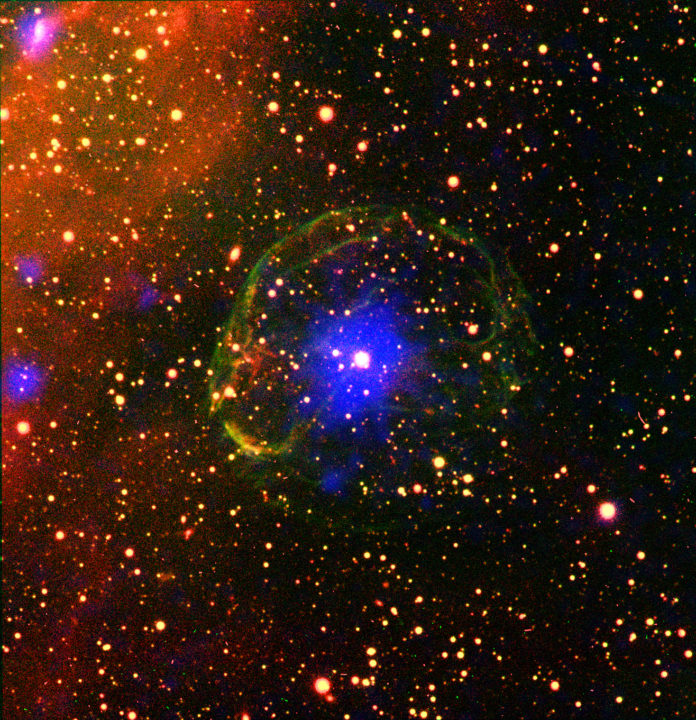Pulsars in binary systems can often display a strange phenomenon known as ‘glitch,’ but up until now, astronomers have had a hard time proving it. But now one of the largest ever timing irregularity has been observed in a pulsar and is the first step towards to proving these ‘glitches’ exist.
Like everything else in the world, stars undergo their own evolution process and pulsars are one possible solution of the end result. Some really big stars end up in huge supernova explosions which finish them off and hurtles their stellar materials out into the great outer space.
The extremely dense object that’s left behind is a black hole, neutron star, or white dwarf. If it is a neutron star that’s left behind, then there may also be a strong magnetic field circling it, and causing a light to beam out that’s visible from Earth. For us down here it looks very much like the star is emitting pulses of light, hence where the name ‘pulsar’ is derived. A sudden change in pulsar SXP 1062’s rotation speed was detected by scientists from the Middle East Technical University and Baskent University in Turkey. It’s the first time these ‘glitches’ have been observed in binary pulsars and is an exciting time.
Lead author of the study is Mr. M. Mirac Serim, a senior Ph.D. student, and he says, “This pulsar is particularly interesting since as well as orbiting its partner star as part of a binary pair, it is also surrounded by the remnants of the supernova explosion which created it.”
Accretion is a process that involves pulsars feeding on the leftover material from the supernova explosion. It’s been suggested that the size of the glitch is linked to the gravitational influence of its companion star as well as the accretion of the material surrounding it.
Together, strong forces are then exerted on the crust of the neutron star until finally the rotation of the pulsar shifts and a glitch is produced as a result. Co-author of the study, Dr. Seyda Sahiner, commented, “The fractional frequency jump observed during this glitch is the largest, and is unique to this particular pulsar. The size of the glitch indicates that the interiors of neutron stars in binary systems may be quite different to the interiors of isolated neutron stars.”
More News to Read
- Researchers Make a Breakthrough in Neutrino Behavior
- The Medical Implications Weightlessness Has on our Astronauts
- Researchers Discover Lonely Microbes Have Higher rate of Antibiotic Resistance
- Are Nanodiamonds the Answer to Safer Batteries?
- Scientist Identified a Portion of the Brain that Intensified the Desire For Cocaine

